Self-levitating reactionless thruster, 9 times more powerful than the Space Shuttle main engine.
Overview
Few technologies literally transform the world. Examples include the invention of the wheel, the development of the automobile, or the creation of the internet. If it works as the math appears to show, the Nassikas thruster-II (version 2) would be such a game changing technology.
This superconducting thruster was invented by Dr. Athanassios Nassikas, a professor formally with the Technological Educational Institute of Thessaly, Greece (recently retired). Early in 2015 professor Nassikas filed a patent application on his idea and the next step is to construct and test a proof of concept of this thruster, and this is where we need your Indiegogo crowd funding help.
Calculations indicate that the test thruster we intend to build should develop a thrust about 13.6 times the thruster’s own weight. In other words, a group of these thrusters could easily lift a vehicle off the ground. This thrust-to-weight ratio is about 9 times that of the Space Shuttle main engine! A more practical production version should be capable of generating thrusts even 20 times greater at liquid nitrogen temperatures.
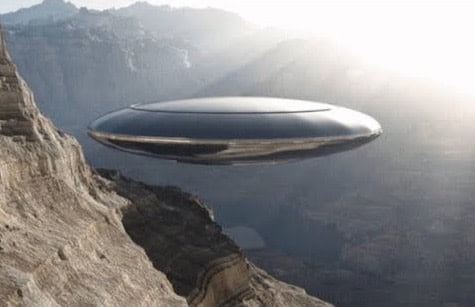
The Nassikas thruster-II technology, could make the following possible:
- Cars that could take off vertically and fly through the air.
- Cruise ships that could levitate as in the movie The Fifth Element.
- Space shuttles that could lift off the Earth without the help of rockets.
- Interplanetary shuttles that could fly to Mars in 5 days, not 9 months as NASA currently has in mind.
- Manned space ships that could attain near light speed velocities and travel to the nearest star system (e.g., Proxima Centauri) in 4.5 years, instead of 20,000 years.
- Thrusters that could produce shaft torque to generate pollution-free electricity.
- A scooter that could not only move forward, but hover and fly above the ground.
- A “hoverboard” something like that depicted in the sci fi movie Back to the Future which the movie predicted would be in common circulation in 2015.
The upper video shows a pendulum test where the thruster and its liquid nitrogen coolant container are together suspended. A constant axial thrust in the direction of the nozzle’s narrow end propels the thruster causing it to swing to the left with respect to a vertical plumb bob. The thruster’s lateral momentum causes the pendulum to overshoot its equilibrium angle, thus causing it to oscillate around this off-plumb equilibrium. Air currents present in the room were ruled out as being far too insignificant to affect the experiment. As may be seen in the first video, when the permanent magnet is removed from the thruster, it is no longer able to generate a thrust and the pendulum hangs in its plumb position.
The second video shows the thruster outside of its cooling bath after being precooled in liquid nitrogen and suspended at the end of a cord. Once the superconductor warms above its critical temperature, its swinging ceases and the pendulum hangs in the plumb position.
For a comparable thruster weight, the Nassikas-I test thruster is found to produce 10 times more thrust than the Q-Thruster currently being tested by NASA. Moreover whereas the Q-thruster consumes 2.5 kilowatts of power to develop its 920 milliNewtons of thrust, the Nassikas thruster-I consumes no power at all.
The Nassikas thruster-II invention was inspired following the successful results he had obtained with his low thrust precursor Nassikas thruster-I invention. Dr. Nassikas points out that both of his thrusters operate on a similar principle. So given that his first thruster has been shown to work, we strongly believe that the present crowd funded version, the Nassikas thruster-II, should work as well. This second version is expected to produce about 30,000 times more thrust than the version I thruster.
Professor Nassikas has explained the design of his superconducting coil and its means of generating thrust to one of the primary Ph.D.s working at the NHMFL Mag Lab (National High Magnetic Field Laboratory) in Gainesville, Florida, an expert in superconducting coil design, who agreed that it may very well work as Dr. Nassikas claims. We have also informed NASA personnel associated with the NASA Innovative Advanced Concepts program (NIAC) about both of his thruster designs and their capabilities and one member of that team was interested enough to request that we keep him informed of our progress. This new thruster concept was also described this past October in a lecture presented at a space program conference in Texas, and it generated considerable public interest. We feel this is only the beginning.
However, due to its exotic construction, the material and production costs for a prototype of the second version are significantly higher, and beyond what Dr. Nassikas and myself can self-fund. And that’s where you come in. We at NTCo (Nassikas Thruster Cooperative) need your funding to help us build and test a thruster prototype to demonstrate that what may at first seem impossible may in fact be possible. Currently this effort will involve myself, Paul A. LaViolette, Ph.D., Athanassios Nassikas, Ph.D., two other team members, and the capabilities of the subcontractor company we have selected that has experience in custom fabrication of superconductor coils. Once the technology’s viability is demonstrated, it should be possible to very quickly secure investment money to finance further development as well as patenting, marketing, and licensing of the idea to qualified manufacturers.
The costs of carrying out this prototype construction project are as follows:
- $25,600 to wind the superconducting coil (55% of this is the cost of the superconducting wire tape).
- $ 6,000 to subcontract the testing of the superconducting coil cooled in liquid nitrogen at 77° K and related expenses.
$31,600 total
These costs can be adequately met by our fund raising goal of $32,000. If we exceed this goal we could use the extra money to test the thruster cooled in liquid helium to 4 degrees above absolute zero. Our subcontractor has quoted this would add a cost of $8,800 to the above project cost, bringing the total to around $40,000. At liquid helium temperatures, we estimate the coil should generate a thrusts dramatically greater. While the liquid helium dewar would weigh much more than a liquid nitrogen dewar, 100 kilograms, still the overall thrust-to-weight ratio should be higher than with liquid nitrogen cooling.
Assuming that the thruster tests are successful, a public demonstration will be held to showcase the technology. At that moment, the world of transportation as we know it will change. Thereafter, international patents will be filed using further private investment capital and any capital left over from the crowd funding campaign. The technology will then be licensed to independent manufacturers for incorporation into new aircraft and spacecraft designs as well as other applications that were listed earlier. If all goes according to plan, mankind will be using this technology to transport themselves through the skies and the solar system within the decade.
If there is extra money left over from the campaign, we may use it also to conduct further tests of the Nassikas thruster version 1 device, which we believe could exhibit at least a 10 fold greater thrust when cooled below liquid nitrogen temperatures to 40 K; i.e., forces as high as 20 grams. Extra funding could also allow us to demonstrate this device in university physics classes to show the new generation first hand that some technologies can break the laws of physics.
How the Nassikas thruster-II works
The Nassikas thruster-II is basically a superconducting coil that has a slight taper so that it has the form of a frustrated cone, rather than a cylinder; see diagram below (Fig. 1). The coil is wound from high temperature superconducting tape (such as REBCO CC tape). When energized with an electrical current from an energizer, a very high amperage current begins to flow in the coil windings (~ 200 amps per square millimeter) and this generates a very strong magnetic field oriented in the direction of the coil’s axis. This field is several times higher in the vicinity of the coil’s superconducting windings as compared with its center.
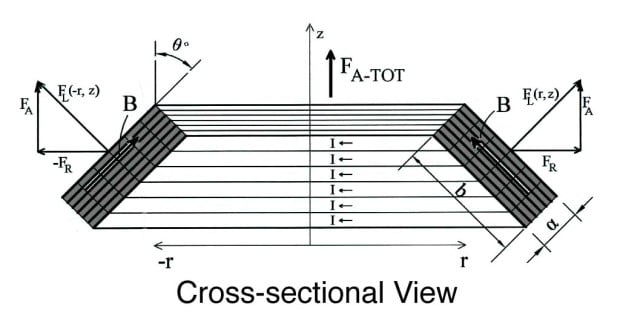
Fig. 1. A cross sectional view of the Nassikas thruster-II superconducting coil.
The magnetic field surrounding the coil’s windings will penetrate into them to some extent and will interact with the high current flowing there. This interaction produces a very strong force called a Lorentz force, which is oriented at right angles to both the direction of the current and the direction of the magnetic field; see outward pointing arrow F sub L in Figure 1. This is very straight forward, something that any physicist or electrical engineer will attest to. Also it is something that designers of superconducting coils are very wary of because if this outward pushing force is too strong it can rip the coil apart.
Because superconducting coils are normally wound as cylinders, their Lorentz forces will push radially outward on the sides of the coil and oppose one another, resulting only in a stress attempting to radially expand the coil but counteracted by the tensile strength of the coil’s windings. This is something known by all engineers who wind superconducting coils. However, in the case of the Nassikas thruster, which has a conical shape, there should also be a thrust component resultant that is directed along the axis of the coil in its vertical direction pushing in the direction of the coil’s narrow end; see force vector F sub A in Fig. 1. Because there is no opposing force to counterbalance this force, the coil should develop a net thrust that should tend to propel it upward. This should not manifest merely as a static stress in the coil itself, but should actually levitate the coil.
The test coil we intend to have made will have an outside diameter of 16 centimeters (6.3″) and a taper of 3°. Since the purpose is only to demonstrate the coil’s ability to produce a propulsive thrust, we are designing it with fewer windings than would be used in a marketable version. Hence the current density and magnetic field intensities will be lower than those quoted above. Computer calculations performed by our coil manufacturer subcontractor show that at liquid nitrogen temperatures the coil should achieve a current density of 70 amperes per square millimeter in its windings and should produce a reasonably strong magnetic field in the vicinity of those windings. Lorentz force calculations indicate that this lower thrust version should generate an axial propulsive force of 66 kilograms. The coil together with its dewar flask filled with liquid nitrogen should weigh about 5 kilograms. Hence the thruster is predicted to produce a levitation force over 13 times greater than its weight.
Remember the above calculations are based on standard physics (the cross product of current and magnetic flux density). So even if our test shows that these computer model calculations have been overly optimistic even by a factor of ten, it should still be possible to produce more powerful versions that have the capability of levitating a heavy payload.
For our test we intend to have the thruster and its liquid nitrogen dewar suspended by a cord from the ceiling of our subcontractor’s laboratory facility. The thruster coil inside the dewar would have its axis oriented in a horizontal position. So once cooled down and energized it should produce a lateral force. We will measure this force with an electronic balance oriented sideways so that the dewar and its coil would exert a force on the balance, the force being transferred through a rigid styrofoam spacer block. If the coil shows an over unity thrust to weight ratio, we plan to test it in a vertical orientation to show that it can levitate. Provided that the liquid nitrogen test is successful, and that we have extra money available from our crowd funding campaign, we plan to conduct a similar test with the coil immersed in a larger liquid helium dewar (4° Kelvin temperature) which is expected to cause it to exhibit far more thrust.
More about applications
Although the thruster would produce less thrust at liquid nitrogen temperatures, than at liquid helium temperatures, we expect that the thrust amount will still is sufficient to lift its dewar weight and an extra payload off the ground. Moreover liquid nitrogen is more economical to use since it is about 50 times cheaper and also is available in most towns at nitrogen fill up stations used by refrigeration trucks.

For those interested in the hoverboard application, the Nassikas thruster hoverboard would first need to be fueled up with liquid nitrogen and then the coils would need to be energized to get their current circulating before the hoverboard could be used. However, once energized, the Nassikas thruster-II needs no power source to operate since superconducting coils operate with zero resistance. As long as the coil remains immersed in its liquid nitrogen coolant, its current would circulate indefinitely, all the while generating an upward thrust. In designing any flying vehicle, whether a overboard, car, or larger ship, it would be a good idea to design the vehicle with three thrusters in triangle formation and gimbaled so that they could be angled to regulate the amount of upward thrust. Also one would want to include a gyroscope to stabilize the vehicle’s orientation.
Once this technology is proven successful, manufacturers would likely first be applying it to vehicle propulsion and space propulsion. As mentioned, one advantage of these superconducting thrusters is that once they are energized they should maintain their Lorentz force propulsive thrust without further energy input. The only cost would be the need to periodically fuel up with liquid nitrogen coolant at ten cents per liter (or $5 per liter if a liquid helium coolant is used). Of course no coolant would be needed in space since behind a sun screen the temperature there is about 40 degrees above absolute zero, and even lower as you get further from the Sun. Hence trips could be made to Mars and beyond with virtually no energy input requirement, and voyages to nearby stars could become a real possibility.
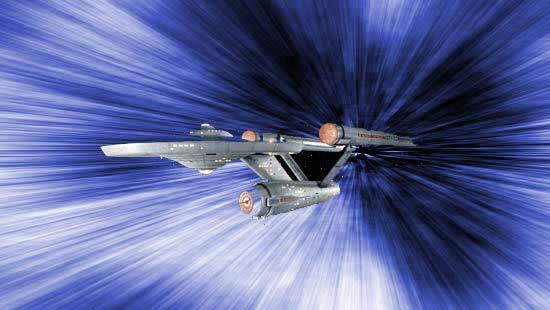
Some may be wondering whether it is possible for something to move and produce useful work without requiring any physical source of input energy. Doesn’t this violate some laws of physics? Well, the same could be said about the Nassikas thruster-I which we have demonstrated does just that. It generates a thrust without any source of physical energy input. This has been demonstrated numerous times in pendulum tests. We will discuss below where the paradigm busting Nassikas thrusters might be getting their energy. But first let us examine the Nassikas thruster-I which has been built, tested, and shown to operate successfully.
More About Our Already Tested Low Thrust Version: The Nassikas thruster-I
The Nassikas superconducting thruster I (version 1) was invented some years ago by professor Nassikas as an outgrowth of a physics theory he had been working on regarding the nature of the quantum vacuum (Nassikas, 2010, 2012, 2015). It consists of a hollow conical nozzle casting made from a high temperature superconductor with a permanent magnet fixed at the narrow end of its throat; see Figure 2. For his previous experiments he forged the nozzle from YBCO (Yttrium Barium Copper Oxide) and utilized a 0.5 Tesla permanent magnet fixed within it. The thruster measures about 5 cm in diameter and 4.2 cm in length to the tip of its magnet. Together with its magnet, it weighs 118 grams. Pendulum tests similar to the one shown in the video below have demonstrated that it generates a force of 2.2 grams (21 milliNewtons).
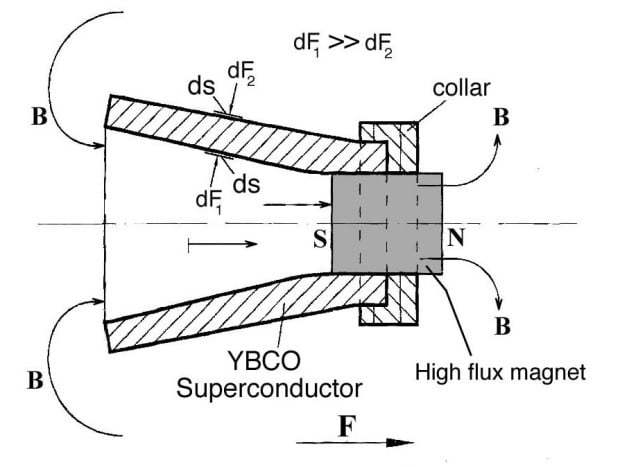
Fig. 2. A cross sectional view of the Nassikas thruster-I.
To understand how the Nassikas thruster-I works, we must first learn about Meissner forces, a subject which is standard physics. When a superconductor is cooled below its critical temperature (e.g., by immersing it in liquid nitrogen), it impedes external magnetic fields from entering its interior. That is, “super currents” are generated within the superconductor which produce a mirror field that repulsively opposes any external magnetic fields. This repulsive force has been called the Meissner effect force. This is the force that levitates maglev trains. That is, the superconductor plates on the bottom of a maglev train repel the upward pointing magnetic field produced by magnets embedded in the rail and as a result the train is made to float above its track.
Now, what Prof. Nassikas has done is find a way of attaching the magnet to the superconductor and thereby producing a net propulsive force. The “secret” behind this is that his thruster is able to produce unbalanced Meissner forces. Referring to Figure 2, it is seen that the magnetic field from the attached permanent magnet surrounds the superconductor nozzle producing Meissner effect forces both on the surface within the nozzle’s throat as well as on the nozzle’s exterior surface. These forces, however, are unbalanced. Because the magnet’s lines of flux are more concentrated in the nozzle’s throat, the outward directed forces dFsub1 pushing against the nozzle interior will be much greater than the inward directed forces dFsub2 pushing against the nozzle’s exterior surface. Hence dFsub1 >> dFsub2. As a result, when all these opposing force components are accounted for, it is found that a net resultant force remains which is directed toward the nozzle’s narrow end. It turns out that this resultant force is able to displace the nozzle as a whole, i.e., cause it to accelerate. These is not a stress force acting within the superconductor, this is a propulsive force.
In other words, although the permanent magnet is creating this magnetic field, the magnetic field itself is not rigidly attached to the magnet; it resides in the space around the magnet and the superconductor and is able to act in a manner free of attachments to this magnet. As a result, the net Meissner effect force it produces on the superconductor is able to propel the superconductor relative to the instantaneous space reference frame. As the superconductor moves forward, so does the attached magnet and the Meissner-effect-generating magnetic field. So, if left free in space where temperatures are cool enough to keep the thruster in its superconducting state, the thruster should accelerate indefinitely.
Now some physicists might complain, does this not violate the law of energy conservation? Where does the energy come from that propels the thruster? We maintain that it comes from quantum space-time itself, which is similar to what physicists call the quantum vacuum. Dr. Nassikas has explained this in various publications listed in the reference section below. In effect, we propose that the Nassikas thruster taps into the quantum vacuum prime mover, or what Nikola Tesla referred to as harnessing the wheelwork of Nature.
Furthermore one must realize that when it comes to imposing the standard teachings of physics, the subject of how superconductors interact with external fields constitutes a gray area. Currently a unified theory does not exist that describes what happens both outside a superconductor as well as inside. Physics relies on Maxwell’s equations to describe field phenomena in space outside of a superconductor and on the London equations to describe phenomena occurring in the thin outer layer of the superconductor within its “London penetration depth”. Deeper than that we have no theories and no unified theory to tie all of these together. So any concerns that the Nassikas thruster shouldn’t possibly work because it violates “known laws of physics”, are not well grounded. Moreover we have the pendulum test results to prove that it does work.
By comparison, the Nassikas thruster-II also produces its thrust with no energy input, but the principle behind the way it functions is virtually the same as for the version I thruster. In both cases you have unbalanced forces acting on superconductors that have a conical overall geometry and in both cases these forces are produced by magnetic fields interacting with electrical currents within the superconductor (supercurrents induced within the superconductor nozzle versus strong currents energized within a superconducting wire coil). The end result is the same: propulsion toward the nozzle’s narrow end, or toward the coil’s narrow end.
Also you can The Plan
- Build and test the Nassikas thruster II technology.
- If successful inform news media and secure investment funding.
- Use the investment funding to finance world wide patenting.
- Market the technology to qualified manufacturers.
- Allow them to develop products that will transform the world.
Sharing Our Campaign
Please share our campaign with your friends. You can use the share tool which is located in the toolbar next to our video. Also you can copy our campaign url into an email and share it with your friends, or you can add it as a link on your Facebook page. Also you can add a “widget” to your blog or personal website. To do this, click Embed and then copy and paste the widget code.
–––––––––––––––––––––––––––––––––––––––––––––––
References
LaViolette, P. A. Secrets of Antigravity Propulsion. (2008, Bear & Co., Rochester, VT) [for general background on the history of reactionless thruster technology].
Nassikas, A. A. “Magnetic propulsion device using superconductors.” U.S. patent No. 8,952,773, February 10, 2015.
Nassikas, A. A. “Minimum contradictions physics and propulsion via superconducting magnetic field trapping.” AIP Conf. Proceedings, 1208, pp. 339-349, 23-25 February 2010. Space, Propulsion & Energy Sciences International Forum SPESIF‐2010: 14th Conference on Thermophysics Applications in Microgravity 7th Symposium on New Frontiers in Space Propulsion Sciences, 2nd Symposium on Astrosociology, 1st Symposium on High Frequency Gravitational Waves. Abstract published at SAO/NASA.
Nassikas, A. A. Experimental verification of superconducting self propulsion.” Proceedings of the Natural Philosophy Alliance, Albuquerque, 2012.
Nassikas, A. A. Minimum Contradictions Everything, Reviewed and edited by Duffy, M.C. and Whitney, C.K., Hadronic Press, p. 185, ISBN: 1-57485-061-X, 2008. Available through Amazon.
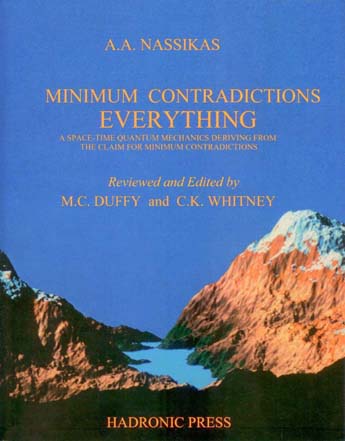
Source: https://www.indiegogo.com/projects/superconducting-levitation-thruster#/
Disclaimer: We at Prepare for Change (PFC) bring you information that is not offered by the mainstream news, and therefore may seem controversial. The opinions, views, statements, and/or information we present are not necessarily promoted, endorsed, espoused, or agreed to by Prepare for Change, its leadership Council, members, those who work with PFC, or those who read its content. However, they are hopefully provocative. Please use discernment! Use logical thinking, your own intuition and your own connection with Source, Spirit and Natural Laws to help you determine what is true and what is not. By sharing information and seeding dialogue, it is our goal to raise consciousness and awareness of higher truths to free us from enslavement of the matrix in this material realm.
 EN
EN FR
FR












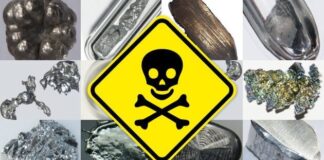












You need energy to acceletrate a massive object…
A future with hoverboards is worth my $1000 petrodollars!
It is possible that the Nassikas thruster operates…
http://arxiv.org/pdf/1302.2537v1.pdf
http://arxiv.org/pdf/1507.02897v1.pdf
http://www.google.com/patents/US20140152227?hl=pl&cl=en
lol.. “Cars that could take off vertically and fly through the air.” ..is this really such a great idea taking into consideration most people can’t even drive a car on the road safely?? ..although the travelling throughout the universe sounds great …once humanity is responsible enough to venture out such far… it would be a shame to see humanity involved in trashing some other corner of the galaxy… but slowly and surely humanity is waking up and the future is really starting to look more exciting, much better and much brighter for everyone. to the days ahead.. peace, love and light to all.
I will love to contribute in the development of this wonderful technology, its the future